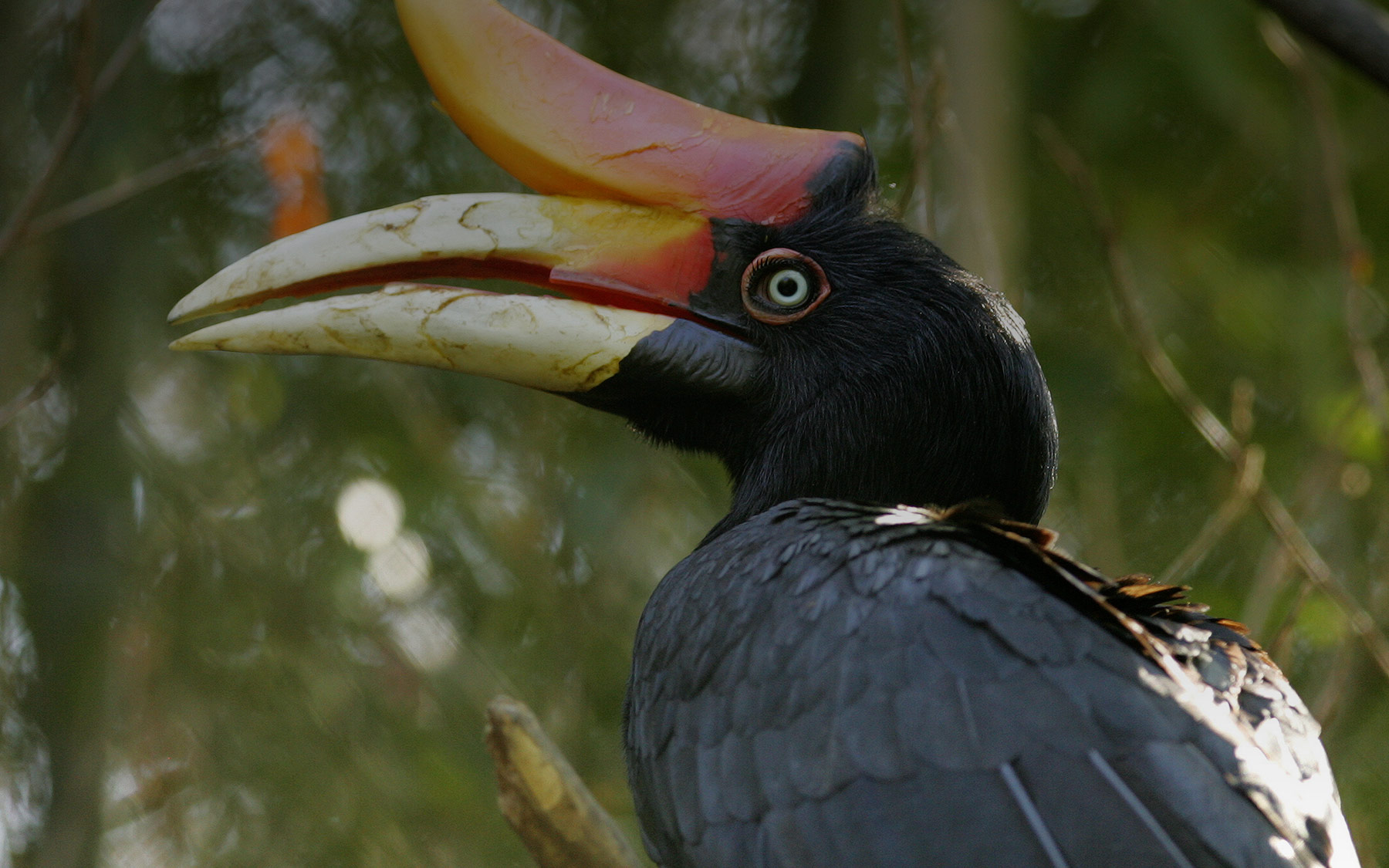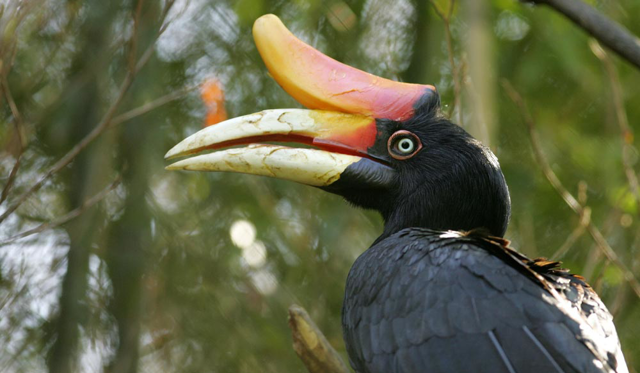
Species Information
The rhinoceros hornbill (Buceros rhinoceros) is one of 54 species of hornbills that exist. It can be distinguished by its banana-shaped casque on the top of its beak. The casque is made out of keratin, like our fingernails, and is very strong and lightweight. The hornbill can live up to 35 years and can be found in Southeast Asia.
Rhinoceros hornbills are cavity nesters, meaning the female hornbill will lay 1-3 eggs inside a hollowed out tree. The female seals herself and her eggs inside the tree, using mud and scat to close the opening, leaving only a small slit for the male to pass food through to her. The female stays inside the nest for 3 months incubating the eggs and caring for the chicks once they hatch.

IUCN Classified: Near Threatened
The rhinoceros hornbill is classified as “Near Threatened” by the IUCN and faces many challenges in the wild. Along with the global issue of deforestation resulting in a loss of habitat, these birds are hunted as food, and ornaments are made out of their casques and feathers. While the species is not yet considered endangered, it has been decreasing in number.



